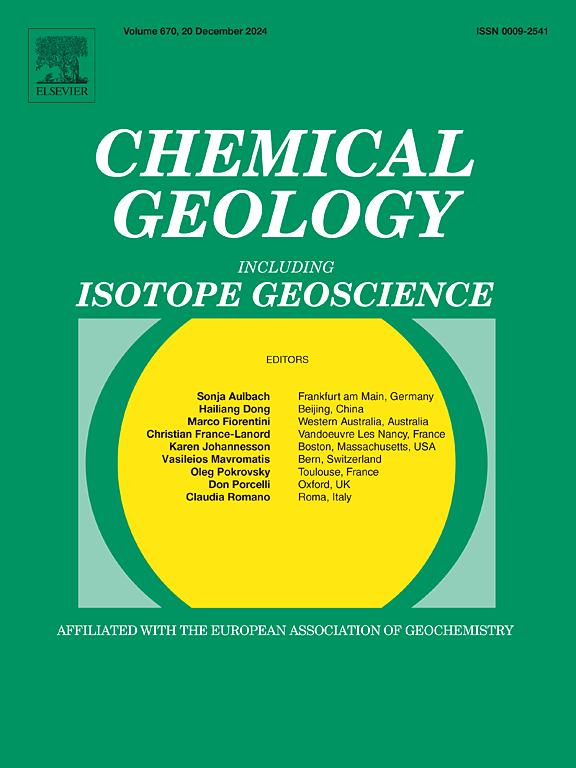Seas to lakes and vice-versa: A test of facies versus elemental salinity proxies
IF 3.6
2区 地球科学
Q1 GEOCHEMISTRY & GEOPHYSICS
引用次数: 0
Abstract
Recognizing marine-to-lacustrine (M-L) and lacustrine-to-marine (L-M) transitions can be difficult in stratigraphic successions, particularly in those composed of fine-grained sediments containing few fossils. Here, we test the utility of elemental salinity proxies (i.e., B/Ga and excess B) to assist in constraining the timing of such transitions in mixed marine-lacustrine strata of the Cretaceous (Valanginian-Hauterivian) Agrio Formation in Argentina. A combination of salinity and redox proxy data reveal that initial isolation of the Neuquén Basin watermass from seawater exchange resulted in transient hypersalinity and deepwater anoxia, followed by long-term freshening of the evolving lacustrine system. Subsequently, reconnection with the global ocean was marked by a large salinity increase prior to the appearance of marine fossils and transgressive surfaces. Our findings demonstrate the utility of elemental salinity proxies in identifying M-L and L-M transitions in fossil-poor, fine-grained successions, and they highlight the importance of using geochemical proxies in combination with sedimentological and paleontological information to understand salinity transitions in paleodepositional systems.
求助全文
约1分钟内获得全文
求助全文
来源期刊

Chemical Geology
地学-地球化学与地球物理
CiteScore
7.20
自引率
10.30%
发文量
374
审稿时长
3.6 months
期刊介绍:
Chemical Geology is an international journal that publishes original research papers on isotopic and elemental geochemistry, geochronology and cosmochemistry.
The Journal focuses on chemical processes in igneous, metamorphic, and sedimentary petrology, low- and high-temperature aqueous solutions, biogeochemistry, the environment and cosmochemistry.
Papers that are field, experimentally, or computationally based are appropriate if they are of broad international interest. The Journal generally does not publish papers that are primarily of regional or local interest, or which are primarily focused on remediation and applied geochemistry.
The Journal also welcomes innovative papers dealing with significant analytical advances that are of wide interest in the community and extend significantly beyond the scope of what would be included in the methods section of a standard research paper.
 求助内容:
求助内容: 应助结果提醒方式:
应助结果提醒方式:


